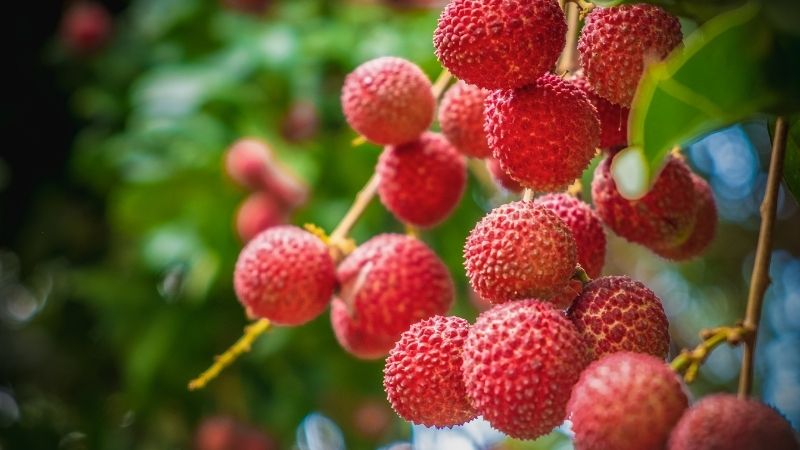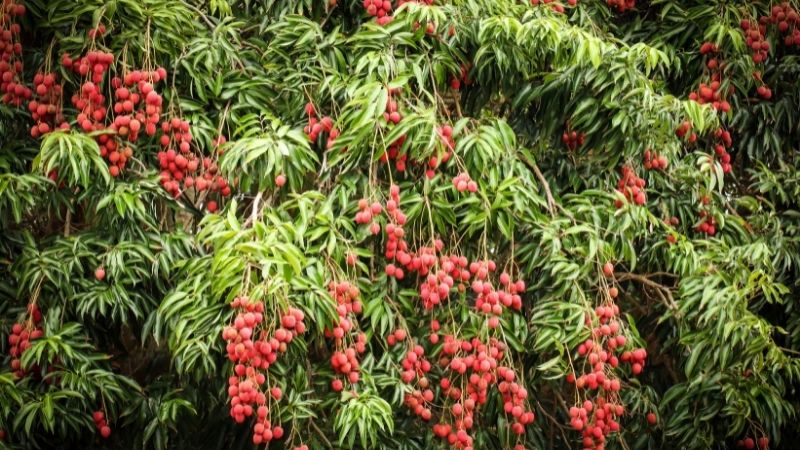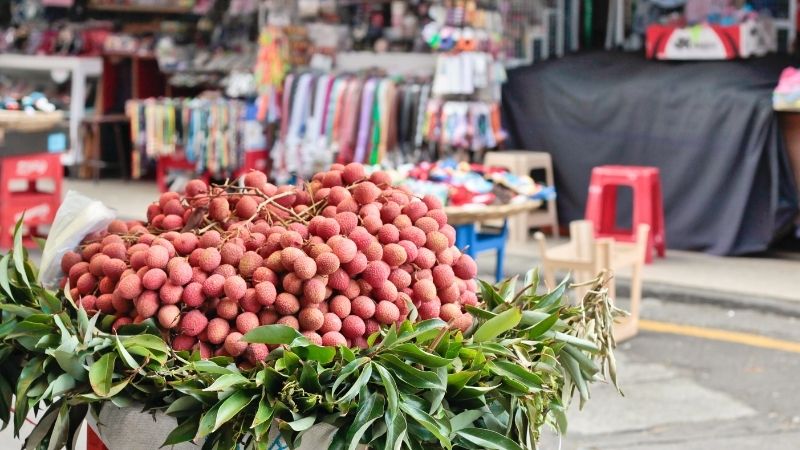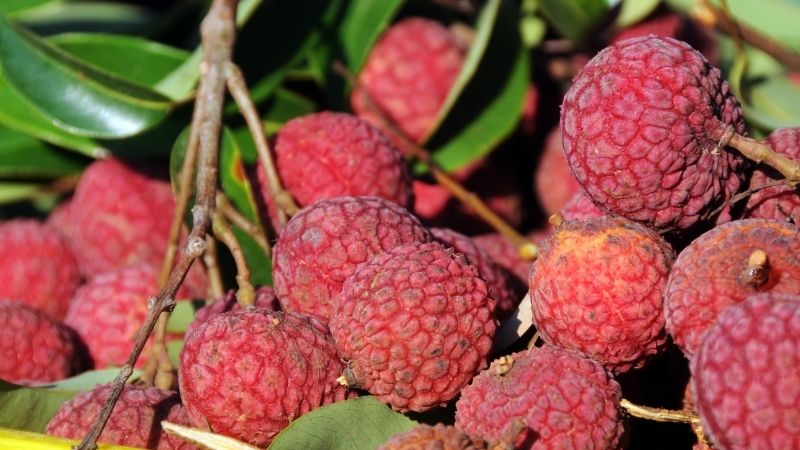Litchi, or lychee, is a beloved fruit among many. Have you ever wondered about its origins, history, and seasonality? Let’s delve into the fascinating story of this delectable fruit in the article below!
Further Reading:
1. Unraveling the Origins and History of Lychee
In the late 19th and early 20th centuries, Mr. Hoang Van Com, a native of Thanh Ha, Hai Duong, worked as a porter in Hai Phong port. One day, he stumbled upon six lychee seeds discarded by traders from Thieu Chau, China. He took those seeds, planted them, and managed to grow three trees, but only one survived. This lone tree was carefully nurtured and propagated, leading to the lychee cultivation we know today.
 The origins of lychee
The origins of lychee
Out of gratitude to Mr. Hoang Van Com, his descendants built a shrine next to the original tree. Because the fruit originated from Thieu Chau traders, it was named after them—lychee, or “vải thiều” in Vietnamese. This ancestral tree still stands today, cared for by Mr. Hoang Van Thu, Mr. Hoang Van Com’s grandson.
In front of the tree stands a concrete stele bearing the name of Hoang Van Com, honoring his contribution of introducing this delicious fruit to the region, akin to providing rice to the villagers.
2. Lychee Season: When to Enjoy This Delicious Fruit
Lychee Season in Bac Giang
The lychee season in Bac Giang spans over a month, typically starting in mid-May and lasting until early July. From mid-June to early July is the peak harvest time for lychees, which the locals refer to as the main crop season.
 Lychee season in Bac Giang lasts for over a month
Lychee season in Bac Giang lasts for over a month
Lychee Season in Luc Ngan
Similarly, the lychee season in Luc Ngan falls between late May and early July, extending for over a month. The peak season for Luc Ngan lychees is from mid-June to early July, when tourists flock to the region to indulge in the freshest and most delicious lychees, capturing vibrant photos, and relishing the lively atmosphere amidst the hills.
 Luc Ngan lychees ripen in late June
Luc Ngan lychees ripen in late June
3. Exploring Different Types of Lychees and Tips for Selecting the Best Ones
Varieties of Lychees
Let’s take a closer look at some of the most delectable lychee varieties in Vietnam.
Further Reading:
Luc Ngan Lychees
Luc Ngan lychees boast thick flesh, small seeds, and a rich, sweet flavor, devoid of any sourness or astringency. They are considered one of the finest lychee varieties in Vietnam, cherished by domestic consumers and exported to numerous countries.
 Luc Ngan Lychees
Luc Ngan Lychees
Thanh Ha Lychees (Hai Duong)
Thanh Ha lychees are the smallest in size among modern lychee varieties, but they make up for it with thick, crisp flesh and a refreshing sweet taste. The seeds of this variety are remarkably small, and the older the tree, the smaller the seeds become, with some fruits having almost no seeds at all. Their fragrant aroma makes them a favorite among lychee enthusiasts.
 Thanh Ha Lychees
Thanh Ha Lychees
Bat Trang Lychees (Hai Phong)
Bat Trang lychees are known for their vibrant red shell, plump fruit, and sweet, fragrant taste. They are gaining recognition in the market and are a popular choice among consumers.
 Bat Trang Lychees
Bat Trang Lychees
Further Reading:
Tips for Choosing Fresh and Delicious Lychees
To select the finest lychees, start by examining the fruit’s shell. Ripe lychees will have smooth spines, a bright pink shell, and a rounded shape. Opt for clusters of lychees that still have fresh, green leaves and wings attached to the fruit.
 Tips for choosing fresh lychees
Tips for choosing fresh lychees
The ideal lychee will feel slightly soft yet firm and springy to the touch, exuding a distinctive aroma without any hint of fermentation or sourness.
If possible, peel a lychee or two to inspect the fruit further. The best lychees will have white stalks, no discoloration or wormholes, slightly dry shells, juicy flesh, and seeds that are easy to remove.
There you have it—a journey through the origins, history, and seasonality of lychees. Thank you for joining us, and we hope you can select the freshest and most delicious lychees using these tips!






































